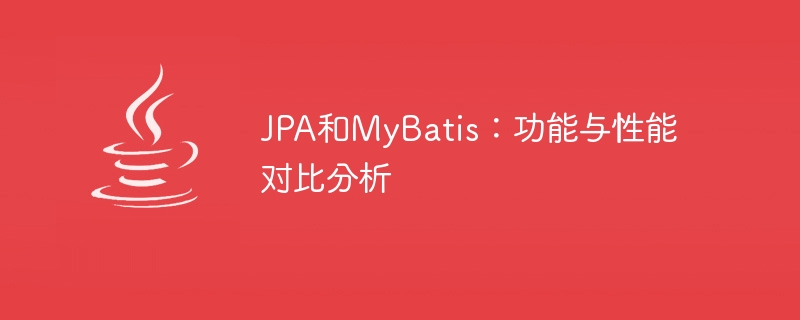

JPA and MyBatis: Function and Performance Comparative Analysis
Introduction:
In Java development, the persistence framework plays a very important role. Common persistence frameworks include JPA (Java Persistence API) and MyBatis. This article will conduct a comparative analysis of the functions and performance of the two frameworks and provide specific code examples.
1. Function comparison:
From a functional perspective, JPA is more advanced and abstract, providing more out-of-the-box functions. MyBatis is more flexible and suitable for handling complex database operations.
2. Performance comparison:
From a performance perspective, MyBatis is usually more efficient than JPA. However, it should be noted that the performance depends on the specific usage scenarios and operation methods.
3. Sample code:
@Entity
@Table(name = "user")
public class User {
@Id @GeneratedValue(strategy = GenerationType.IDENTITY) private Long id; private String username; private String password; // 省略getter和setter
}
public interface UserRepository extends JpaRepository
User findByUsername(String username);
}
// Query using JPA
User user = userRepository.findByUsername("admin");
public interface UserMapper {
@Select("SELECT * FROM user WHERE username = #{username}") User findByUsername(String username);
}
// Use MyBatis query
UserMapper userMapper = sqlSession.getMapper(UserMapper.class);
User user = userMapper.findByUsername("admin");
Conclusion:
To sum up As mentioned above, JPA and MyBatis have their own advantages and disadvantages in terms of functionality and performance. JPA provides more high-level abstraction functions suitable for simple database operations, but there may be some loss in performance. MyBatis is more flexible, suitable for handling complex database operations, and has high performance. Therefore, when choosing a persistence framework, comprehensive considerations should be made based on specific needs and scenarios.
The above is the detailed content of Comparative analysis of the functions and performance of JPA and MyBatis. For more information, please follow other related articles on the PHP Chinese website!
 what is jpa
what is jpa mybatis first level cache and second level cache
mybatis first level cache and second level cache SQL statement to backup database
SQL statement to backup database What is the difference between ibatis and mybatis
What is the difference between ibatis and mybatis How to configure database connection in mybatis
How to configure database connection in mybatis What is the working principle and process of mybatis
What is the working principle and process of mybatis What are the differences between hibernate and mybatis
What are the differences between hibernate and mybatis How is the performance of php8?
How is the performance of php8?



